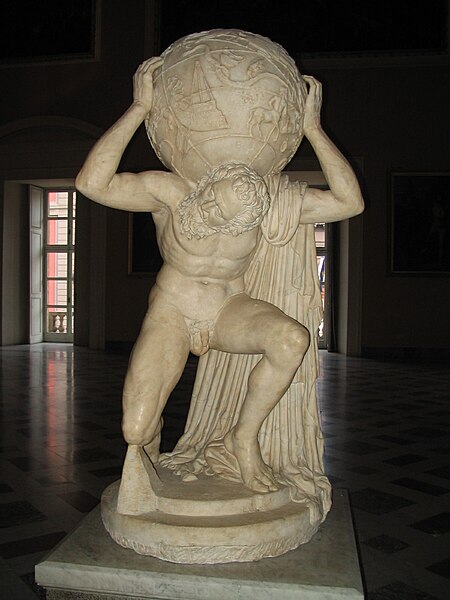The Farnese Atlas is a 2nd-century AD Roman marble sculpture of Atlas holding up a celestial globe. Probably a copy of an earlier work of the Hellenistic period, it is the oldest extant statue of Atlas, a Titan of Greek mythology who is represented in earlier Greek vase painting, and the oldest known representation of the celestial sphere and the classical constellations. The sculpture is at the National Archaeological Museum of Naples, in Italy.
Farnese Atlas (Museo Archeologico Nazionale, Naples)
Rear view
In Greek mythology, Atlas is a Titan condemned to hold up the heavens or sky for eternity after the Titanomachy. Atlas also plays a role in the myths of two of the greatest Greek heroes: Heracles and Perseus. According to the ancient Greek poet Hesiod, Atlas stood at the ends of the earth in the extreme west. Later, he became commonly identified with the Atlas Mountains in northwest Africa and was said to be the first King of Mauretania. Atlas was said to have been skilled in philosophy, mathematics, and astronomy. In antiquity, he was credited with inventing the first celestial sphere. In some texts, he is even credited with the invention of astronomy itself.
The Farnese Atlas, the oldest surviving depiction of the celestial spheres.
Atlas and the Hesperides by John Singer Sargent (1925)
Herkules und Atlas by Lucas Cranach the Elder
Atlas and Heracles, metope from the temple of Zeus at Olympia.






